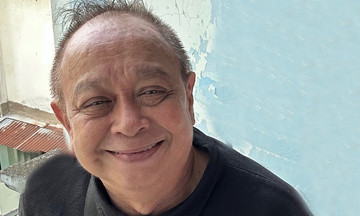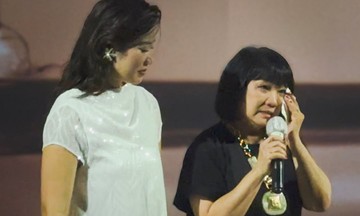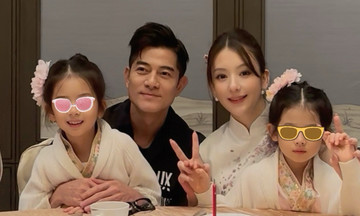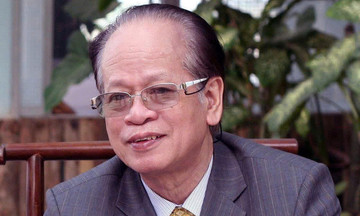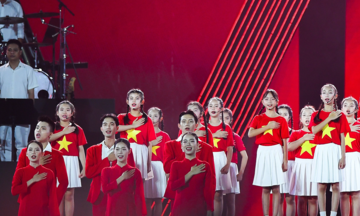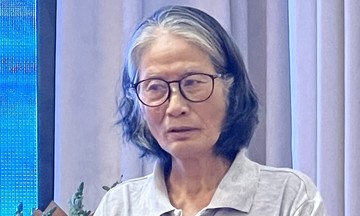After 9 days in theaters, "Mua Do" (Red Rain), a film revolving around the 81-day defense of Quang Tri Citadel, surpassed 300 billion VND, becoming the highest-grossing Vietnamese war film to date. The film centers on one of the fiercest battles on the northern border and has been praised for its content.
Over the past two years, several Vietnamese films of the same genre have captured the audience's attention. In April, "Dia Dao" (The Tunnel), directed by Bui Thac Chuyen, which depicts the lives of soldiers fighting in the "steel land and copper citadel" of Cu Chi, earned 172 billion VND. At the beginning of 2024, "Dao, Pho va Piano" (Peach, Pho, and Piano), directed by Phi Tien Son and commissioned by the Ministry of Culture, Sports, and Tourism, grossed nearly 21 billion VND and broke even after almost three months in theaters, according to statistics from the Cinema Department.
Over the past half-century, Vietnamese cinema has produced approximately 100 films about the war. Before 1975, revolutionary cinema was considered a "spiritual weapon," with classics like "Chung mot dong song" (Same River), "Canh dong hoang" (The Abandoned Field), and "Bao gio cho den thang muoi" (When the Tenth Month Comes) exploring the yearning for peace.
After the country's reunification, this genre focused more on individual fates, incorporating elements of romance, epic storytelling, and action. Years later, these films gradually completed their historical mission, becoming overshadowed by the competition from more commercially-driven films.
"Dao, Pho va Piano" (Peach, Pho, and Piano) emerged as a starting point for the genre's resurgence. Although its quality wasn't entirely convincing, the film showed a degree of audience acceptance. As the nation commemorates the 50th anniversary of reunification and the 80th anniversary of National Day, audiences are increasingly interested in historical films. According to Doctor of Literature Ha Thanh Van, the vitality of this genre stems from two factors: national memory and the desire to affirm cultural identity in contemporary life.
Today's directors are striving to refresh their storytelling and diversify perspectives. "Dao, Pho va Piano" (Peach, Pho, and Piano) takes a romantic, epic approach, showcasing the simple beauty of old Hanoi through cultural symbols. The film emphasizes the human aspects and everyday emotions of people amidst the war, allowing viewers to deeply appreciate love and the beauty of life in difficult circumstances. Despite its shortcomings in dialogue and a somewhat sprawling cast of characters, the film's portrayal of characters' fates resonates with audience tastes.
"Dia Dao" (The Tunnel) uses space and the historical context as the main character, with the tunnel system symbolizing resilience and ingenuity during the resistance war against the Americans. The film explores multiple perspectives, creating a picture of war and humanity, conveying a message of unity, courage, and loyalty. "Mua Do" (Red Rain) focuses on the tragic aspect, recounting the days of defending Quang Tri Citadel with intense battle scenes. The film also highlights sacrifice, family affection, and romantic love, making the often dry subject of war touch the hearts of viewers.
Flexible distribution and promotion are key factors in allowing these projects to reach wider audiences than before. Bui Quang Minh, Chairman of Beta Group, which owns the Beta Cinemas chain, said that when "Dao, Pho va Piano" (Peach, Pho, and Piano) was released last year, the theater chain decided on a non-profit distribution model in many provinces and cities to support a state-produced film. Initially, they only expected to attract history buffs, but the actual turnout exceeded expectations.
"We understand that young people are not indifferent to history. The issue lies in the approach; viewers need stories told in a modern, emotional language. When a film meets these criteria, they are willing to pay to see it," Minh said.
Following that success, "Dia Dao" (The Tunnel) was released with a combined investment from the state and private sectors. In addition to promotion on social media platforms, the crew organized meet-and-greet events at cinemas, giving audiences the opportunity to meet the filmmakers and hear behind-the-scenes stories.
For war films to maintain long-term appeal, experts believe that filmmakers need sustained investment and creative approaches. In reality, production costs are often very high due to the need to recreate settings, costumes, and weapons, while box office revenue is unpredictable. This is a major obstacle causing many projects to be prolonged or delayed.
Director Bui Thac Chuyen nurtured the script for "Dia Dao" (The Tunnel) for 10 years, living with former guerrillas to understand their younger lives. When filming interior scenes, the crew had to build a 250 m long tunnel model because the real tunnel was too small to accommodate cameras. Explosion scenes were created using a vibration platform to simulate tremors, and for the tank attack scenes, they built a machine to collapse the tunnel, safely showering the actors with soil.
Regarding "Mua Do" (Red Rain), director Dang Thai Huyen said the project was conceived in 2012 when writer Chu Lai completed the script, but it wasn't until 2021 that it was launched. The preparation process lasted nearly three years, including meeting witnesses, consulting with historical advisors, and preparing equipment. The project filmed in Quang Tri for 81 days and completed post-production just one month before its theatrical release.
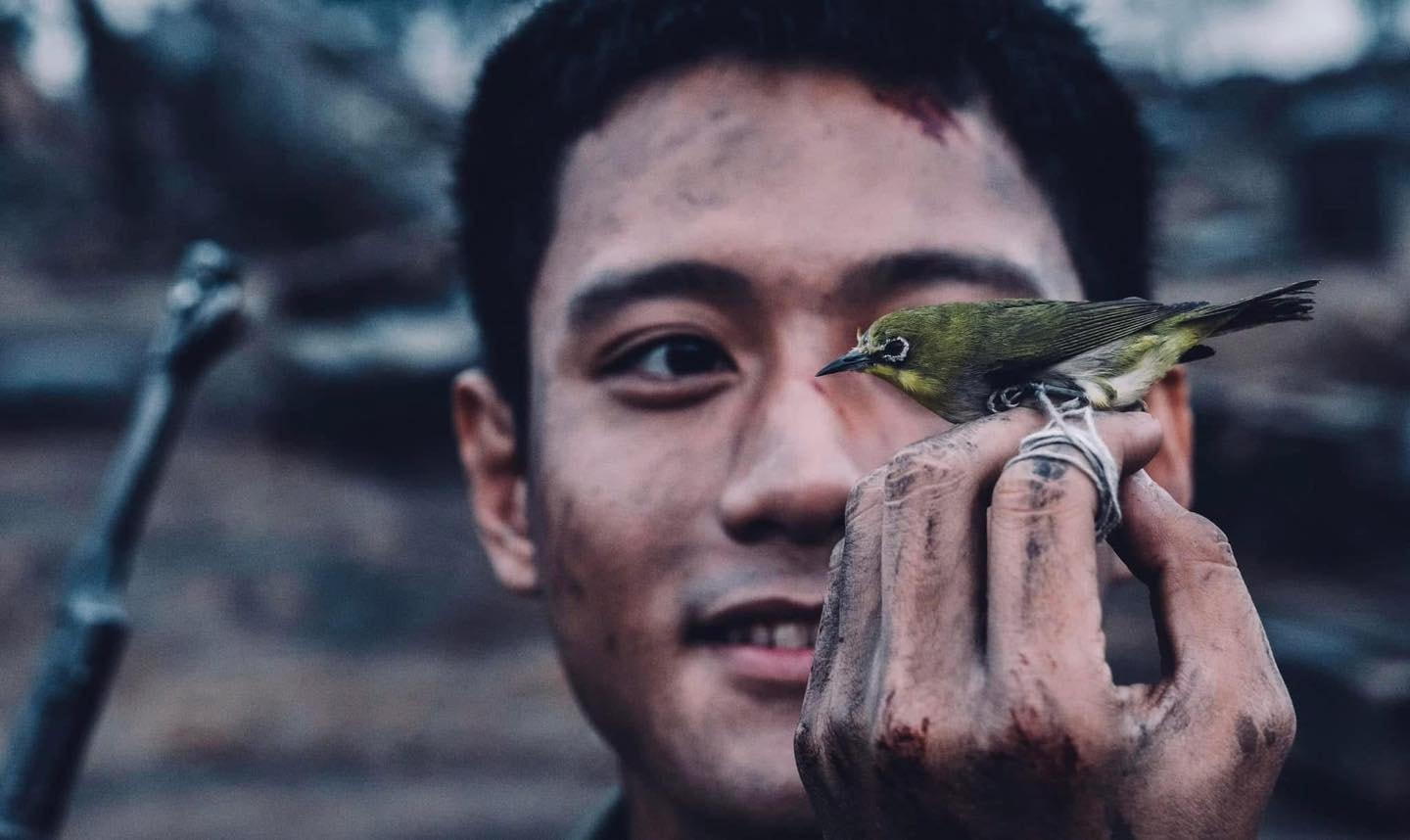 |
A scene from "Mua Do" (Red Rain), actor Dinh Khang plays Tu - a high school student who writes an enlistment letter in his own blood. Photo: Provided by the film crew |
In addition, this genre faces pressure from horror, comedy, and social dramas in the domestic market. According to director Dang Thai Huyen, for historical films to achieve quality in both content and technique, the younger generation of filmmakers must balance art and commerce, finding relatable storytelling methods while still conveying the spirit of patriotism. When that balance is found, historical films can become an essential part of contemporary cinema.
In the past, Vietnamese war and historical films have reached great heights, winning numerous domestic and international awards. According to the book "Vietnamese Cinema" by researcher Tran Trong Dang Dan, within two decades (1955-1975), artists created 411 films, including 344 documentaries and 67 feature films, demonstrating resilience and creativity despite limited resources.
Each film at that time was not just a record but a reflection of the nation's indomitable spirit and desire for independence, inspiring millions of hearts to look toward the front lines. According to Le Thi Ha, Director of the Vietnam Film Institute, over time, this genre has contributed to increasing mutual understanding between both sides of the conflict, thereby healing the wounds of war and strengthening friendly cooperation in the future.
Que Chi




